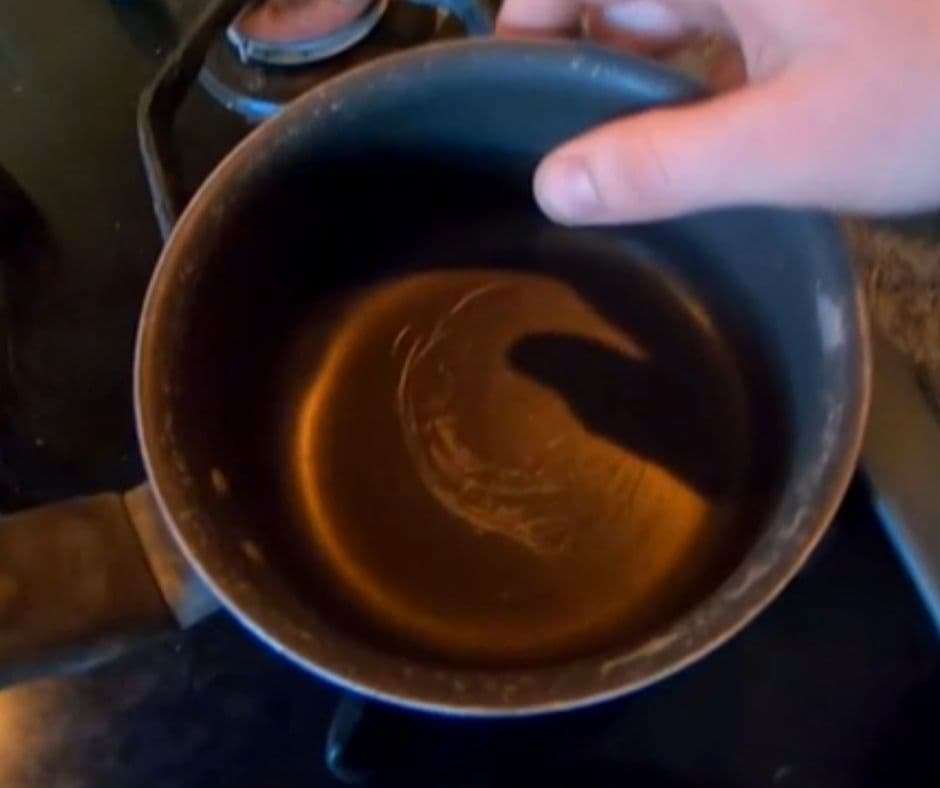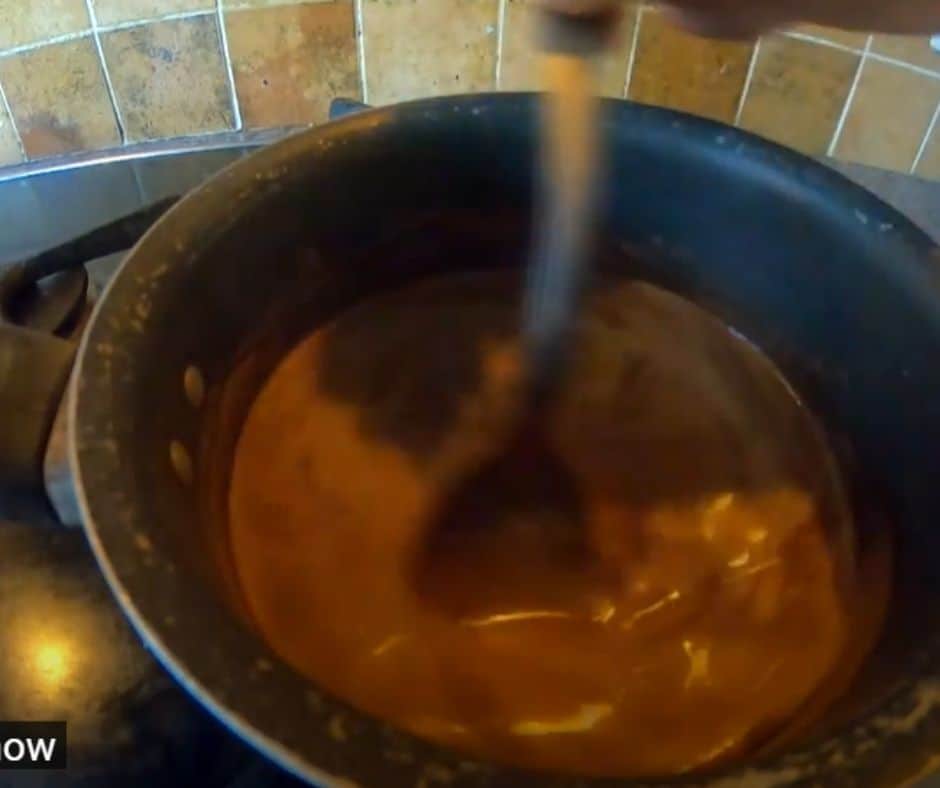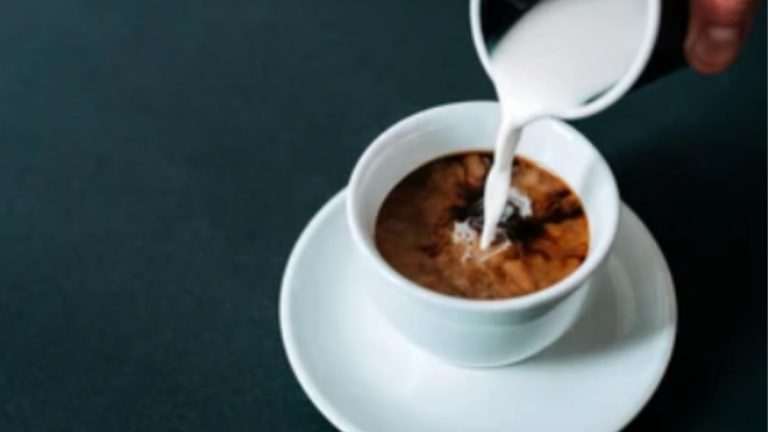How to make Turkish coffee without an ibrik
Are you fed up with brewing the same old coffee every day? Even though a standard electric coffee maker is straightforward to use, you may wish to branch out from time to time. It brings us to the question, How to make Turkish coffee without an ibrik?
Introduction
Table of Contents
You’re missing out if you prefer bold, strong coffee and haven’t tasted Turkish coffee. Turkish coffee is brewed in a certain way that gives it a rich texture and flavor that no other method can match. Regrettably, traditional Turkish coffee is prepared in a copper pot known as an ibrik, which most people do not own.
It’s a one-of-a-kind brewing technique that developed in Turkey.
Turkish coffee is traditionally brewed in an ibrik, also known as a cezve in other countries, a copper pot.
In North America, though, we simply refer to it as an ibrik (it is a lot easier to pronounce).
So you’ve discovered the indescribable pleasures of rich, silky Turkish coffee, but you don’t have an ibrik to prepare it in? (The ibrik is a little copper pot with a long handle to make this fantastic coffee.) We would learn some basic techniques for making Turkish coffee without an ibrik.
How to make turkish coffee without an ibrik

We strongly advise you to purchase an ibrik. But in the meantime, make it in a little pot on the burner. Use the tiniest saucepan you can find. Normally, enough is made for one espresso cup, but I like to make enough for an 8oz mug of coffee in an American-size mug.
Pour about a cup of water into your pot with a tablespoon of a coffee scoop of grinds. Add a teaspoon of any kind of sugar and a pinch to a teaspoon of ground cardamom (depending on your choice).
Bring the water to a boil over medium heat. It can take up to five minutes to make Turkish coffee. Lift it for a second after it’s boiling, then place it back down to bring to a second boil.
Pour into your mug, lay aside for a few minutes to allow the grounds to settle and the drink to chill, and then enjoy! If desired, the cream can be added.
How do you make Turkish coffee without a coffee maker?

This method produces a rich, foamy, strong brew, similar to stovetop coffee but slightly fussier. It’s not a typical Turkish coffee process, but it’s one way to produce a pretty deep brew. Yes, in the end, the grinds should be in the cup.
For each dish, start with 6 ounces of cold water. Then, in a small saucepan over low heat, pour water.
Pour 1 heaping tablespoon of coffee onto the pan per serving. Add sugar now, if desired.
Remove the water from the heat when it is ready to boil and skim off the foam. Fill your coffee cup with foam (s).
Return the pan to the heat and cook until it reaches a near-boiling point, then remove from the heat.
Half of the coffee should be poured into your coffee cup (s).
Return the pan to the stovetop and heat it again. Remove from heat after another 15 seconds of boiling.
Fill a coffee cup halfway with this mixture (s). Allow 2 or 3 minutes for the coffee to settle to the bottom.
Using an Ibrik to Make Turkish Coffee
It is entertaining to use an ibrik. To boil this coffee on your stovetop, follow the same guidelines adjusting the amounts depending on the size of your ibrik. Because it needs room to boil up, you’ll need at least an inch of space between the top of the ibrik and where your water begins. Lift it as soon as possible before it boils over and becomes a mess.
You can let it boil for a few seconds after the enormous first bubble pops before pouring. Instead of raising it, sometimes shift it to the side of the burner. The ibrik has a small pour nozzle for easy pouring into your mug, and this pot can be rinsed and wiped away quickly – no scald marks like a traditional pot.
Can you make Turkish coffee with regular grounds?
Yes! You can use ground Turkish coffee instead of normal coffee in your coffee machine. The outcome is a fantastic cup of coffee that tastes like Turkish coffee. The only difference is that you’ll need a lot more Turkish coffee than you would for a conventional cup.
How to make Turkish Coffee pot

To begin, you’ll need a Turkish coffee pot, a thin-walled 3 oz porcelain cup to keep your brew hot as you sip it (espresso cups are too thick), a spoon to stir, sugar if preferred, and coffee ground to a fine powder. Your coffee pot must be the appropriate size for your brew (how to choose the proper size).
Although Arabica beans are the most popular, it doesn’t matter what coffee you drink as long as you enjoy it. However, it should be a light to medium roast because it will darken when you re-roast it while creating your brew.
Turkish coffee can be obtained in a variety of ways:
Preparation
Calculate how much cold water you will need.
Turn the heat to medium-high and place your pot of water on the stove (just until the water heats up).
Per demitasse cup, add around 1-2 heaping teaspoons (or 1 tablespoon) of coffee (3 oz). Don’t stir it just yet. Allow the coffee to “float” on the surface, as stirring it immediately could cause it to clump.
To taste, add sugar. Allow the water to warm up a little bit before stirring it.
When the coffee begins to settle into the water and the water is warm enough to dissolve your sugar, stir it a few times before turning the heat down to low. You should whisk it numerous times until it begins to bubble.
Reduce the heat a little more or move your pot away from the heat source after you see the bubble “ring” forming on the surface. At this point, pay attention to the bubbles that are forming. The size of the bubbles should be very modest.
From this point on, keep a close eye on your brew. Allowing the temperature to rise to the point of boiling is not a good idea. (NEVER LET IT BOIL – many instructions on making Turkish coffee use the term “boiling,” but this is incorrect.) The key idea here is to let the coffee build a thick froth, which happens around 158 F or 70 C (much cooler than the boiling point of water, which is 212 F or 100 C at standard pressure). There will be no foam if your beer comes to a boil because it will just evaporate!).
Allow it to remain at the “foaming” stage for as long as possible without bringing it to a boil. At this point, you might want to gently stir your brew. It will taste better with more foam. Also, your coffee must be freshly brewed; otherwise, it will not taste well.
Ingredients for Turkish Coffee with Cognac
1 tbsp. Turkish coffee (finely ground)
2 tsp. sugar
1 cup of cold water
1 tsp. cognac
Method
Fill the coffee pot halfway with water and bring to a boil. Remove the coffee pot from the heat and add the sugar and freshly ground Turkish coffee. Return the pot to the heat and let the coffee come to a boil, creating froth on top.
Allow the foam to diminish by moving the coffee pot away from the flame. Return the saucepan to the burner and allow it to froth once more. Pour the cognac into small glasses after adding it to the coffee pot. Before serving, wait a minute for the sediments to settle to the bottom.
Turkish coffee was traditionally made without milk or any other additions. By adding vanilla essence, cinnamon, or any liquor of your choosing, you may create your own personalized brew.
Is Turkish coffee healthy?
Although automatic equipment has made it easier to make Turkish coffee, the taste is definitely different when it is brewed in copper pots over a coal fire. There is a lot to say about Turkish coffee, but to make a long story short, we’d like to discuss the features and undiscovered facts about Turkish coffee that make it so unique.
- Coffee aids in weight loss.
According to numerous studies, drinking a caffeinated beverage before a workout will improve your endurance and fat-burning capability if it isn’t too late in the day. Caffeine is known to prolong muscular exhaustion by encouraging your body to utilize its fat reserves as energy rather than relying on stored energy (or glycogen). The longer your stored drive lasts, the more time you have to push yourself at the gym.
- Coffee improves your physical stamina.
If you drink a cup of black coffee an hour before your workout, your performance will improve by 11–12%. Caffeine raises the amount of adrenaline in your blood. Adrenaline is the “fight or flight” hormone in your body, and it helps you prepare for physical effort.
- Coffee aids concentration and alertness.
Caffeine use of 1–6 cups per day, in moderation, aids concentration and improves mental alertness.
- Coffee reduces the risk of dying.
According to studies, coffee drinkers have a 25% lower risk of dying young than those who do not drink Turkish coffee.
- Coffee lowers the chance of a stroke.
Moderate coffee use (1 to 4 cups per day) is linked to a lower risk of stroke and other health problems.
- Coffee lowers the risk of cancer.
Coffee has been demonstrated to reduce the incidence of prostate cancer in males by 20% and endometrial cancer in women by 25%, according to one study. Caffeine may help inhibit the progression of basal cell carcinoma, a common kind of skin cancer.
Bottom line: Choose boiled coffee over filtered coffee because it contains up to 80 times more coffee-specific fatty acids. These fatty acids have earlier been found to suppress cancer growth in animal studies. While the decaffeinated version has some of the same advantages, the extensive chemical process used to remove the caffeine makes it a less ‘organic’ option.
Downside of Turkish Coffee
However, if ingested in excess, it can be quite hazardous. Turkish coffee might cause heart rhythm abnormalities if consumed more than three times per day. As a result, those with heart disease should avoid drinking Turkish coffee. Excessive coffee drinking might also contribute to high blood pressure. Excessive coffee intake can lead to problems, including acid reflux and ulcers. Similarly, when diabetics drink coffee after a meal, their blood sugar levels skyrocket.
Overconsumption of coffee raises the risk of migraines. Furthermore, excessive coffee drinking has a deleterious impact on women’s fertility. It is equally dangerous to consume during pregnancy and nursing. Turkish coffee, like other coffees, decreases the absorption of essential minerals such as iron when drunk frequently. Like anything else, it is also vital to consume Turkish coffee in moderation.
Can I make Turkish coffee in the microwave?
Yes! You can make Turkish coffee in the microwave. We’ll need to gather a few ingredients to get started with this method. Turkish coffee may be made using only two ingredients and one procedure. Here’s how you can make it happen.
Turkish coffee requires the following ingredients:
- Prepare a cup of water
- 1 teaspoon Turkish coffee, prepared
To prepare Turkish coffee, follow these instructions.
Bring the water close to a boil (not the boiling point) inside a microwave, add the coffee, and wait 2 minutes before serving. If you desire a sweeter coffee, sugar can be added.
So that brings us to the end of this fantastic Turkish coffee recipe. This is something we are confident you could make at home.
Is Turkish coffee stronger than espresso?
We can determine the strength of their taste and caffeine content by comparing the strength of Turkish coffee and Espresso. If we’re talking about flavor, Turkish coffee is stronger than espresso. When we compare strength to caffeine content, Espresso comes out on top.
Both Turkish Coffee and Espresso are rich and flavorful, but vastly different.
Because we’re talking about approximately the same amount of coffee in Turkish Coffee and espresso, the caffeine content is nearly identical. The only difference is the type of roast used.
A darker roast, which is commonly used in espressos, has lost a significant amount of caffeine due to roasting. Espresso has less caffeine than other beverages like drip coffee or french press coffee because of the smaller serving size.
Turkish coffee has a lighter roast, and more caffeine is extracted because the water remains in contact with the bean for longer. However, you must consider volume: Turkish coffee and espresso are typically served in 1.5 to 2-ounce servings, so the total amount of caffeine you consume will be minimal.
Because of this, a full 6 oz cup of drip coffee contains more caffeine than a shot of espresso.
If you use the same grounds, the caffeine content will be similar, ranging between 50 and 70 mg per 1.5 fl oz shot.
It’s fascinating to note that the caffeine level is proportional to the volume of the drink. If you compare Turkish coffee and espresso to another beverage of equal volume, you’ll notice that they both have a lot more caffeine!
You’ll see that they’re highly varied based on the type of beans, grind size, preparation, and preparation time.
Well, coffee consumption is always a personal choice, but it’s always a good idea to be aware of your options.
Turkish Coffee vs. Espresso: Which Is Better?
Finally, it’s time to eat! What does Turkish coffee taste like, and what does espresso taste like?
Because of the boiling, Turkish coffee has a thick, rich, and dark froth, as well as an intense, rich, and dark flavor. Some recipes even call for spices like turmeric, cardamom, or cloves to give them an extra kick. Because it isn’t filtered, there will be a variety of textures across the cup. It’ll start out foamy, then turn muddier and grittier over time – but not in a negative way.
Because the grinds are so fine, they will really improve the texture and flavor of Turkish coffee. It should also be sipped and swallowed gently and steadily. Although most of the grounds will have settled, you’ll still get a soft powdery mouthfeel now and then.
Conclusion
Turkish coffee, which is rich and strongly caffeinated, is popular in many nations throughout the world.
Because it is unfiltered, it contains a higher concentration of caffeine and other healthy components, which may have a variety of health benefits.
People who are caffeine sensitive, on the other hand, should avoid this particularly powerful type of coffee.
For coffee enthusiasts, the best thing is that Turkish coffee is simple to produce and can be brewed in the comfort of your own home.
Lastly, cafestol, a diterpenoid found in Turkish coffee and other unfiltered forms of coffee, may boost blood cholesterol and triglyceride levels.







